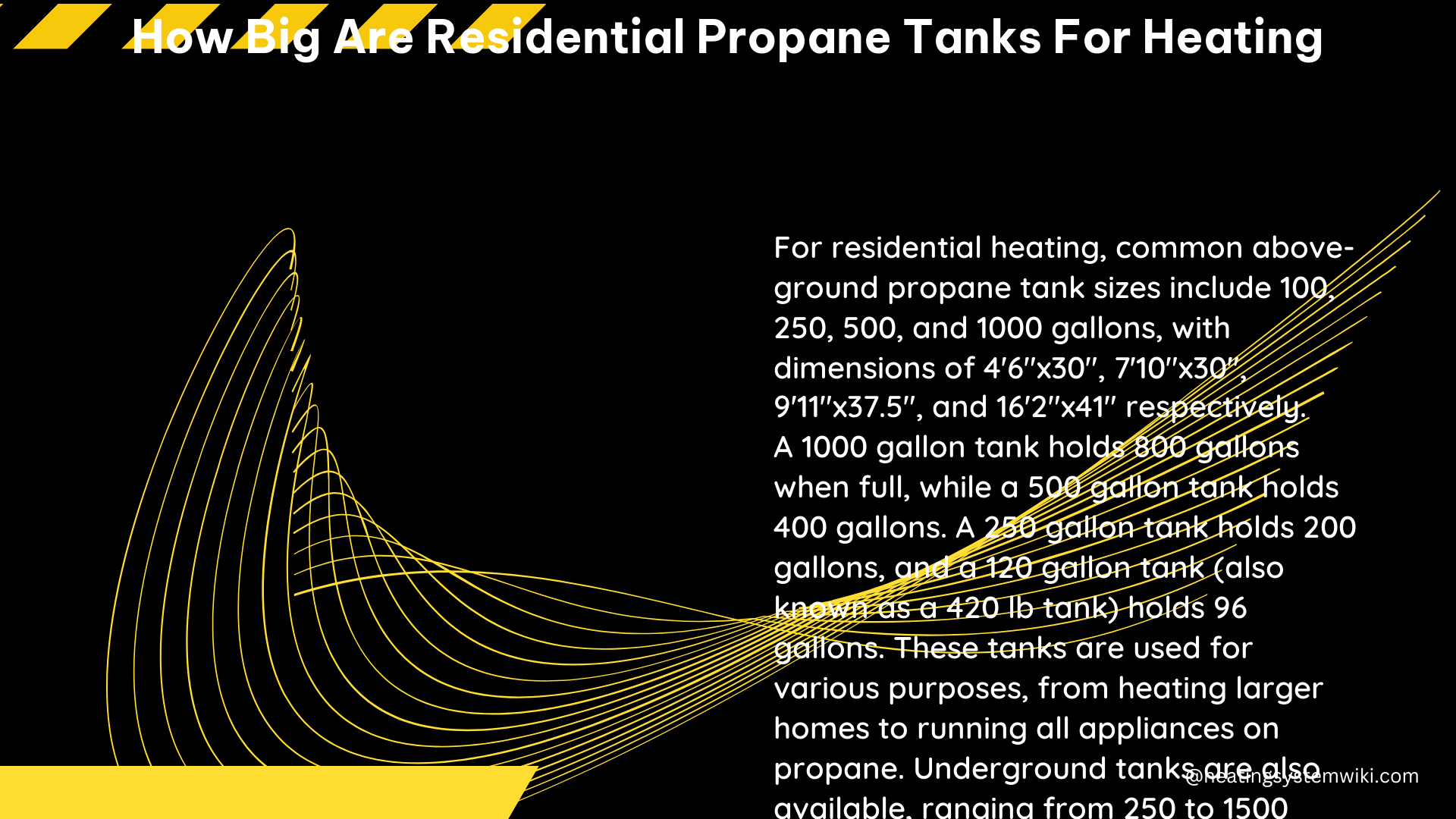Residential propane tanks for heating come in various sizes to accommodate different home sizes and usage requirements. The most common residential propane tank sizes are 120-gallon, 250-gallon, 325-gallon, 500-gallon, 1000-gallon, and 1450-1990 gallon tanks.
Technical Specifications of Residential Propane Tanks for Heating
120-gallon Tank
- Holds 96 gallons of propane
- Dimensions: 54.5″ in height and 30″ in diameter
- Suitable for hot water heaters, fireplaces, home appliances, or space heating for small homes
250-gallon Tank
- Holds 200 gallons of propane
- Dimensions: 7’10” long and 30″ in diameter
- Designed for moderate propane uses, supporting appliances such as a clothes dryer, fireplace, and stove, and are sufficient for a heating system for modest-sized homes
325-gallon Tank
- Holds 260 gallons of propane
- Dimensions: 10′ long and 30″ in diameter
- A compromise between the 250-gallon and 500-gallon tanks, perfect for backup generators or some smaller homes that use less than 500 gallons of propane per year
500-gallon Tank
- Holds 400 gallons of propane
- Dimensions: 9’11” long and 37.5″ in diameter
- Provides power to central heating and small commercial projects
1000-gallon Tank
- Holds 800 gallons of propane
- Dimensions: 16’1.5″ long and 41″ in diameter
- Generally reserved for large industrial and commercial projects, as well as for home heating
1450-1990 gallon Tanks
- Holds 1160-1592 gallons of propane
- Dimensions: 18’4″ – 20’2″ long and 48″ – 54″ in diameter
- Perfect for larger organizations that are looking to run several large appliances on one tank
DIY: Installing a Residential Propane Tank for Heating

Installing a residential propane tank for heating involves several steps, including:
-
Determining the Appropriate Tank Size: Consider your home’s size, usage, and climate to select the right tank size. Factors like the number of bedrooms, square footage, and climate zone can help you determine the optimal tank size.
-
Choosing the Location: The tank should be placed at least 10 feet away from your home, in a location that meets local safety requirements. Ensure the area is clear and level.
-
Preparing the Installation Site: Clear the area around the tank’s location and level the ground to ensure a stable foundation.
-
Connecting the Tank: Hire a licensed professional to connect the tank to your home’s propane system. They will ensure proper installation and compliance with local regulations.
-
Scheduling Maintenance: Regular tank inspections and maintenance are crucial to ensure safe and efficient operation. Schedule annual inspections with a qualified technician.
By following these steps, you can safely and effectively install a residential propane tank for your home’s heating needs.
